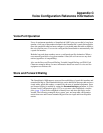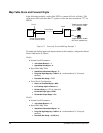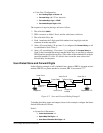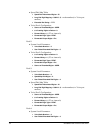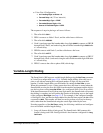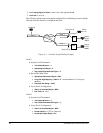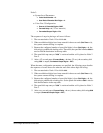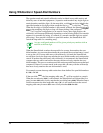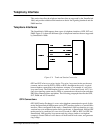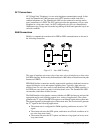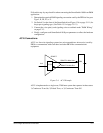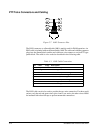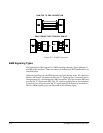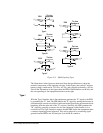
C-8 SmartSwitch 1800 4.0 User Guide, Rev 01
Using Wildcards in Speed-Dial Numbers
The question mark and asterisk wildcards can be included in map table entries and
dialed by users of attached equipment. (A question mark matches any single digit; an
asterisk matches multiple digits.) In the map table, a wildcard can be included in the
speed dial number in any digit position except the first (e.g.,
23*
is valid, but
*23
is not).
When the first digit of a dialed number is the asterisk wildcard, the SmartSwitch will
process the remaining dial digits as long call format dialing if the configured
Long Dial
Prefix
(in Voice Port configuration) is an asterisk. In any other digit position, the
wildcard(s) will be treated differently depending on what is being dialed. If an asterisk
appears in a extended dial string, it is treated as a normal extended digit (no special
processing). If an asterisk is dialed in a speed dial number, the SmartSwitch will
search the map table for a matching entry.
Any pre-configured numbers will be given priority any number with an
asterisk as the first digit.
When the SmartSwitch searches the map table for an entry that matches the user-
dialed number, an exact match terminates the search and the associated entry is used
to set-up the call. If a map table entry with wildcard(s) is found, the SmartSwitch
records how closely the map entry matches the user-dialed number and continues the
search. If another map table entry with wildcard(s) is encountered, the SmartSwitch
compares the two entries and retains the entry that most closely matches the user-
dialed number. This process continues until the entire map table has been searched and
compared. If there is no exact match in the map table, the entry with the wildcard(s)
that most closely matches the user-dial number is used.
For example, assume that map table entries have been defined for speed dial numbers
3*
,
333*
, and
33*
.
If the user dials
3330
, the first mapping table entry (
3*
) will be recorded as a match.
When the second entry (
333*
) is encountered, the SmartSwitch will discard the first
entry, because
333*
more closely matches the user-dialed entry
3330
. When the Smart-
Switch encounters the third map table entry (
33*
), it will retain and use the second
mapping table entry because
333*
more closely matches
3330
than
33*
.




